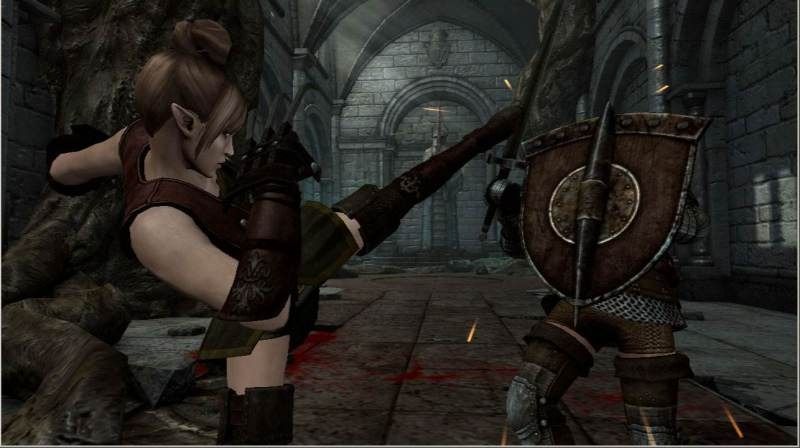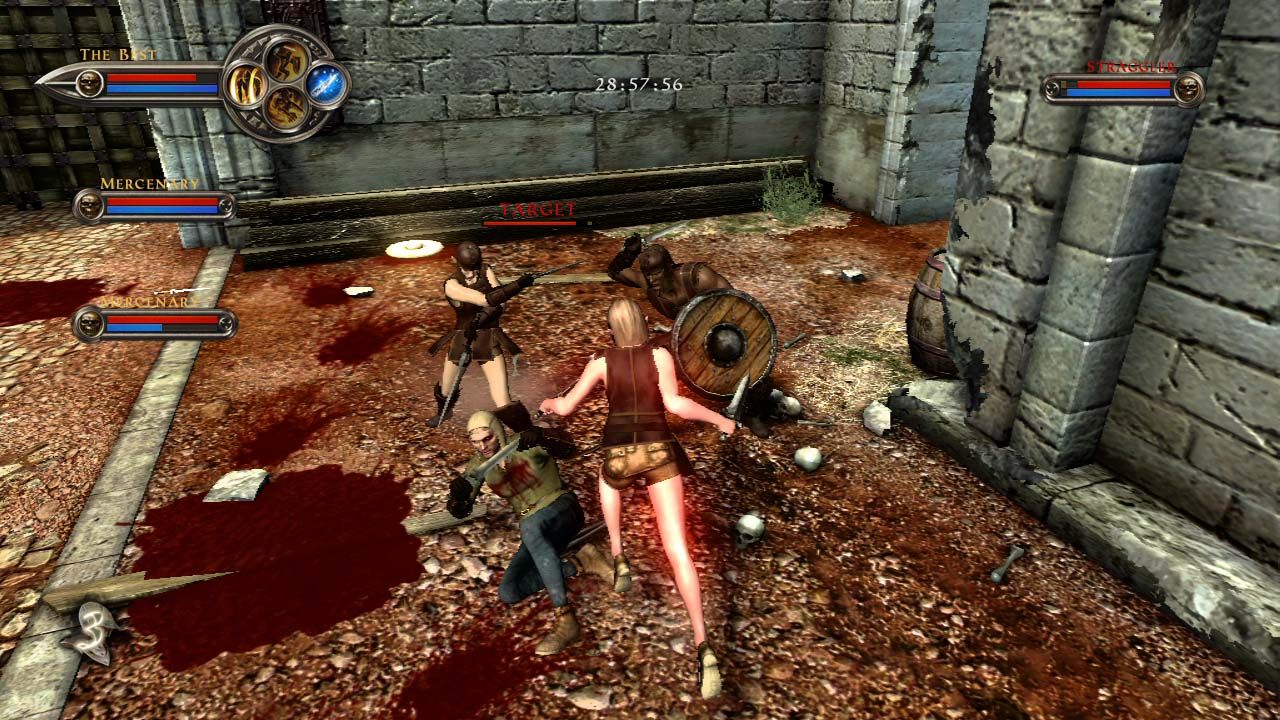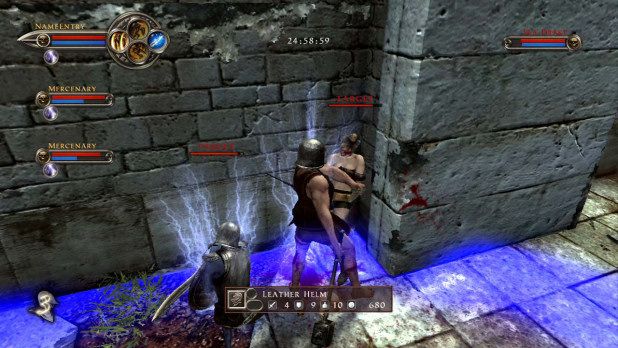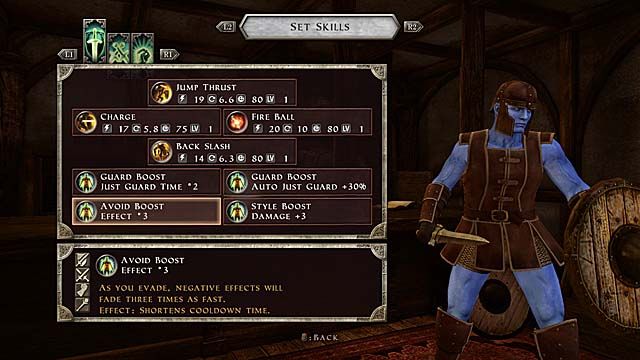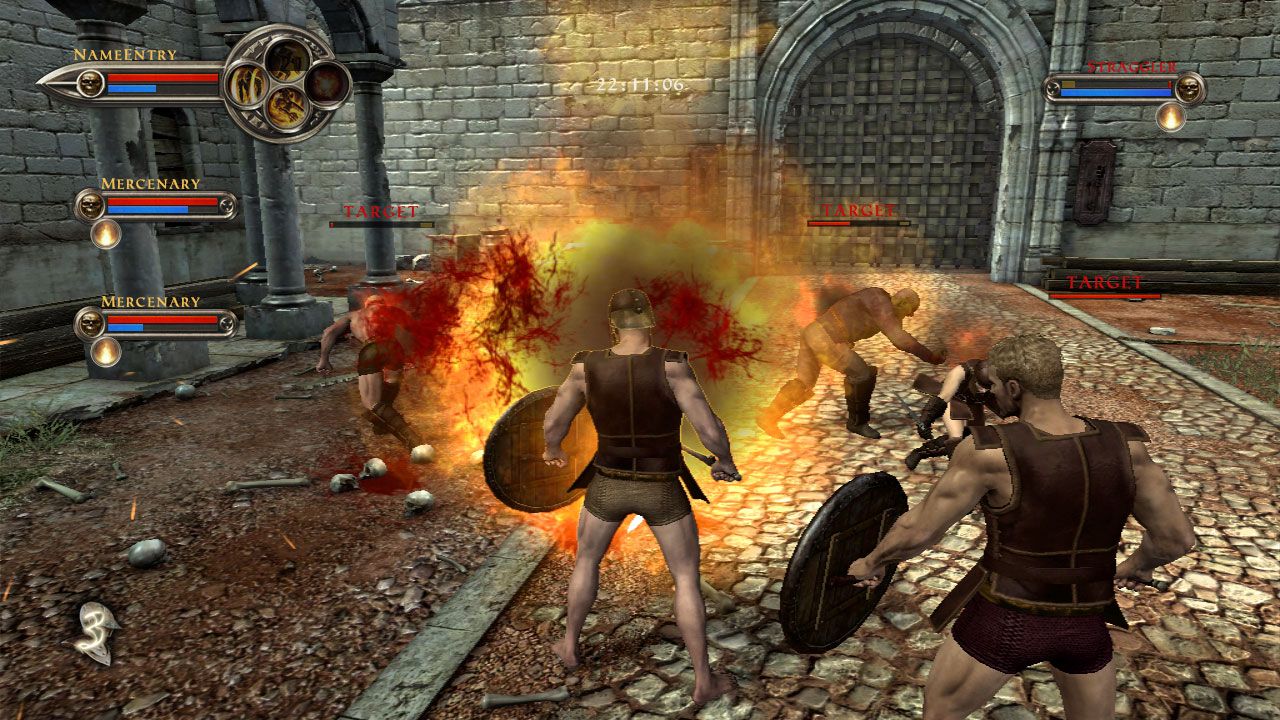Sometimes gamers don't want to be bothered with depth. Sometimes a thick narrative is just a distraction and adventuring just puts unwanted space between battles. For those gamers, Clan of Champions, from Acquire, may be just what the doctor ordered. The premise of the game is quite simple. You create a character, choose from one of three combat styles and races and embark on dozens of trite missions within tiny, bland arenas, leveling your character up with new skills and equipment as you go. The overall experience isn't downright awful, but the lack of any substantial adventure or story make things get old extremely quickly.
The game begins with an introduction to the games thin story. You are a soldier or mercenary thrust into the thick of a conflict between the Kingdom of Ematrias and the Al-waav Urban Allied Forces. The rest of the story nuances are conveyed in little passages you can read before selecting a mission. These passages can be somewhat interesting, but they mostly come across as a cheap and shallow way to convey the tale. There are also occasional cut scenes, but these were so insubstantial that they were almost comedic relief.
The graphics in Clan of Champions is nothing special; they are actually a bit poor. Some of the enemies and arenas are so bland and flat that it seems like the game could have run just as well on the PlayStation 2. Some of the arenas look a bit nicer than others. A general problem that plagues the game is repetitiveness, and this can definitely be seen in many of the stages. Some arenas are literally identical to others. The attack animations during combat are jittery and stiff. A few of the different magic spells and skill attacks look rather neat, but in general, the game's visuals are fairly weak, especially when compared to stronger releases for the PlayStation 3.
The game doesn't sound excellent, either. While some of the music is fine, the character voices can be quite grating. During combat, your character will yell out the same battle cry over and over. By the tenth or so mission, it becomes quite irritating. There's also something a bit odd about the sound of the weapons colliding with armor. Some of the songs, like the one that plays while you're outfitting your character with new equipment, are relaxing and easy to listen to. None of the pieces were remarkable, though.
The game-play itself isn't too bad, it's simply shallow. After a brief introduction to the controls, you begin a long series of missions. These missions primarily consist of defeating all of the enemies within the vicinity before the time runs out. The missions take place within small, generic arenas. In the later missions, once you defeat all the enemies in one tiny arena, you'll be prompted to move to the next area. This next area is typically just another small arena occupied by a few more enemies. Completing these missions was never particularly fun or exciting and the best part of them is finishing them up to see if you earned a new level or learned a new skill.
After each mission you are given the option to purchase any of the equipment that your defeated foes dropped in battle using gold you earn from completing missions. Equipment can be enhanced with gems. These gems give the equipment additional properties, such as increased strength or speed. You also progressively gain new attack skills and skill points you can use to enhance the attacks. You're given two AI partners to complete each mission with. These partners seemed decent, but they didn't seem to do much damage to the enemies.
Combat is a bit stiff and clumsy, but it works. Your character is equipped with a high, medium and low attack, each one good for targeting a specific part of the enemy. Delivering enough damage to a specific piece of an enemy's armor will cause that armor to break, exposing a weak spot. For example, repeatedly using a high attack on an enemy will eventually cause their helmet to shatter. Delivering an attack to their exposed head will do extra damage. This system of high, medium and low attacks is worth remembering, but I found myself spamming the medium attack most of the time and doing just fine. Enemies can use this system against you as well. Once your armor has been destroyed, you'll receive much more damage from enemy attacks.
You can also disarm enemies with attacks and vice versa. Once an enemy loses their armor and weapon, they'll scurry over to equipment dropped by other defeated foes and equip it. The player, on the other hand, isn't capable of this. Once you lose your weapon or armor, you'll have to make do without it until the next mission. This feels unfair at first, but you can level your characters until the enemies pose no threat whatsoever. Enemy variety is practically nonexistent. You mostly fight warriors from one of the three races and wielding one of the three fighting styles. Later in the game you fight skeletons, but they’re easily dispatched in the exact same way as the other enemies. The Japanese game title – Gladiator Vs. – better describes what the game is about.
There are three fighting styles: dual-wield, sword and shield, and close-up. As you complete missions, your fighting style will gain levels. Increasing the level of a specific fighting style will gain you new attack skills to equip. Increasing the dual-wield fighting style level will gain you dual-wield attack skills and so on and so forth. There is a decent amount of different weapons and armor. In addition to the attack skills, you can also learn and equip passive skills and magic spells. The passive skills have useful effects such as reducing the cool down time of certain magic spells or increasing the damage dealt by axes.
Completing certain missions will win you magic spells, but you'll then have to spend gold to purchase them. Some of the spells are also very useful. One spell freezes enemies, dramatically slowing them down. Another temporarily lowers your opponent's armor and defense levels, making it easier to disarm and defeat them. The process of growing your character is the most fun and fully developed aspect of the game. It's genuinely enjoyable to gain new skills, equip new weapons, reinforce your weapons and cast powerful new spells.
The game has various online functions, but there was never anyone playing for me to enjoy them with. There is a leaderboard, as well as competitive and cooperative multiplayer. Ideally, you'll want to join up with some friends to experience the game's online modes, because it's certainly not the most popular title on PSN and I was never able to find even one game to join in. I'm sure that having actual players backing you instead of AI partners would make some of the more difficult missions much easier, but I wasn’t able to see for myself.
My biggest gripe with the game is that it simply doesn't have much substance. Beyond completing the very similar missions and growing your character, there's nothing else to do in the game. The story is an afterthought because you'll find it easier to just start the missions rather than read the page of text that precedes each one. It is almost impossible to care about the war or either party involved in it. The handful of voiceless cut-scenes don't work to progress or convey the story in any way. There's also absolutely no adventuring or discovering to be done. The only things you'll ever see are the tiny, ugly arenas that each of the missions take place in and the bland, unimpressive enemies.
The combat can be fun once you get the rhythm down and learn stronger skills, but it's definitely not good enough to carry the game on its own. With so few merits the game is hard to recommend next to a more fully realized RPG like Dark Souls or The Elder Scrolls V: Skyrim. If you can afford its low price and convince some friends to pick it up too, there might be some hack n' slash fun to be had. However, if you want more than character building and mediocre combat from your RPG, then your money is probably spent better elsewhere.

